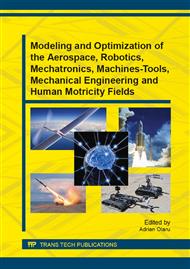p.491
p.497
p.505
p.511
p.518
p.524
p.530
p.541
p.549
Prediction of Temperature in Turning Ti6Al4V
Abstract:
Due to their special and important properties, titanium and its alloys are attractive materials to be used in the industry. This paper presents 3D simulation cases used in optimization of Ti6Al4V titanium alloy turning. The output parameter is the temperature while the input parameters were the machining ones: cutting speed, feed and depth of cut. For simulations, the software based on finite element method - DEFORM 3D© - was used. Finally, the cutting temperature can be considered 2/3 of the maximum value of the temperature range of each simulated case. This statement was verified by real experiments.
Info:
Periodical:
Pages:
518-523
Citation:
Online since:
June 2014
Authors:
Keywords:
Price:
Сopyright:
© 2014 Trans Tech Publications Ltd. All Rights Reserved
Share:
Citation:


